
70th Anniversary of BBM
70th Anniversary of BBM


70th Anniversary of BBM

70th Anniversary Logo created.
Share by : George Ong (The Boys' Brigade in Malaysia)
Last modified: 17-11-2020
Suggest Amendment
2nd KL was founded by Mr Cedric Park at Grace Methodist Church in August 1957.
2nd KL was founded by Mr Cedric Park at Grace Methodist Church in August 1957.
Share by : Chiew Kin Yan Darryn (The Boys' Brigade in Malaysia)
Last modified: 17-11-2020
Suggest Amendment
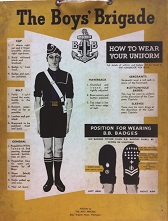
Meanwhile, the 1st Glasgow Company continued to increase its membership and enhanced its programme. Activities such as swimming, cricket and a brass band which superseded the flute band, were incorporated.

Meanwhile, the 1st Glasgow Company continued to increase its membership and enhanced its programme. Activities such as swimming, cricket and a brass band which superseded the flute band, were incorporated. On 30 March 1885, five new Companies were enrolled as follows: 1st Glasgow Company (North Woodside Mission), 2nd Glasgow Company (Berkeley Street U.P. Church Mission, now Blythswood Church), 3rd, 4th, 5th and 6th Glasgow and 1st Edinburgh.
Share by : jave (The Boys' Brigade in Malaysia)
Last modified: 16-05-2019
Suggest Amendment
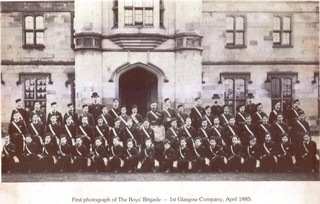
The Boys' Brigade was launched in the Free College Church Mission, North Woodside Road, Glasgow on 4 October 1883 with a crew of three Officers and 28 Boys.

The Boys' Brigade was launched in the Free College Church Mission, North Woodside Road, Glasgow on 4 October 1883 with a crew of three Officers and 28 Boys. Smith was the Captain and the Hill brothers were Lieutenants. It was agreed at the on start by Smith, James and John Hill that however the Brigade might develop, the only ranks should be Captain and Lieutenant. The BB is the world's first uniformed youth organisation. Within the first three weeks, a total of 59 Boys were recruited and strict discipline was enforced within the organisation. In the first session, the Boys did not don on any special attire. It was only in the second session where the haversack, pill-box cap and brown leather waist belt with the BB crest embossed on the buckle were introduced. The addition of a cross-belt for Sergeants came a little later. The Officers sported a small red rosette pinned to the lapel of their jackets. A year or two later, the Officer's uniform comprising of a dark blue suit, glengarry cap with badge, tan gloves and a cane was adopted.
By November 1883, 35 Boys remained on the roll for formal enrolment. In December of that year, the Brigade leaders organised an examination for promotion. Drill, written work, conduct and character were taken into careful consideration. At the end of the exercise, there were two Sergeants, two Corporals and two Lance-Corporals. The Company was divided into six squads, with these Non-Commissioned Officers heading each squad.
Share by : jave (The Boys' Brigade in Malaysia)
Last modified: 15-05-2019
Suggest Amendment
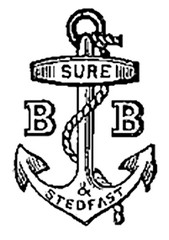
It was in his twentieth year that Smith started active work in the Free College Church in Glasgow. He served as a Sabbath School (or Sunday School) teacher there.

It was in his twentieth year that Smith started active work in the Free College Church in Glasgow. He served as a Sabbath School (or Sunday School) teacher there. When he encountered rambunctious teenage Boys, he sought to discipline them through drill and espirit de corps. He then had the idea to band together Boys above the age of twelve into a "Brigade", in which they would be taught elementary drill, physical exercises, obedience to the word of command, punctuality and cleanliness. Organised games would also be part of the programme. He presented this concept before the Woodside Mission authorities. Permission was given for this experiment to be tried.
He roped in a fellow member of the 1st Lanark, James R Hill, who was also a teacher in the Sunday School. A third Officer who had similar credentials, John B Hill, was also recruited.
They decided upon the following: the name - The Boys' Brigade; the Crest - an anchor; the Motto - Sure & Stedfast (taken from King James Version Hebrews 6:19); Membership for all Boys aged twelve to seventeen; and the Object - The advancement of Christ's Kingdom among Boys and the promotion of habits of Reverence, Discipline, Self-Respect, and all that tends towards a Christian Manliness.
Some ten years later, Obedience was added to the Object of the Boys' Brigade. Manliness has also in some countries been replaced by the gender neutral 'character' since there are now girls who may also join The Brigade.
Share by : jave (The Boys' Brigade in Malaysia)
Last modified: 15-05-2019
Suggest Amendment
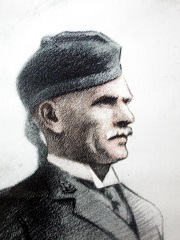
William Alexander Smith was born on 27 October 1854 at Pennyland House, half a mile from Thurso. Thurso is a town of 4000 inhabitants, situated on the north-eastern coast of Scotland.

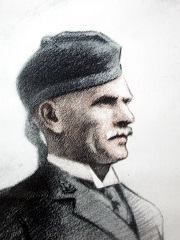
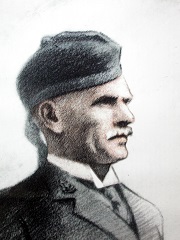
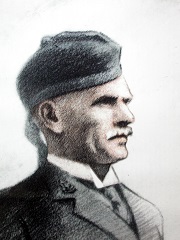
William Alexander Smith was born on 27 October 1854 at Pennyland House, half a mile from Thurso. Thurso is a town of 4000 inhabitants, situated on the north-eastern coast of Scotland, where the Thurso River runs into the sea. Smith was the eldest son of Major David Smith and Harriet Fraser. He was educated at the Miller Institution, known as the "Thurso Academy".
In 1868, when Smith was 13 years old, his father passed away in Swatow, while on business as a director of the Labuan Coal Company. Mrs Smith accepted the offer of her brother, Alexander Fraser to take the eldest Boy into his home and later into his business in Glasgow. In January 1869, Smith enrolled as a student in the private school, The Western Educational Institution, more widely known as Burns' and Sutherland's School. He continued schooling until the age of fourteen and a half. In October 1869, he joined his uncle's business as a clerk. Alex. Fraser & Co. was a wholesale dealer in "soft goods", with shawls being a principal line and South America its primary market.
In those days, it was customary for young men of spirit to join the Volunteers. Hence in 1873, Smith followed the military path of his father and grandfather, who were officers in the army, by joining the 1st Lanarkshire Rifle Volunteers. He progressed steadily in ranks, rising from corporal in 1874 to Lieutenant-Colonel (second-in-command) in 1905.
Share by : jave (The Boys' Brigade in Malaysia)
Last modified: 03-06-2020
Suggest Amendment
